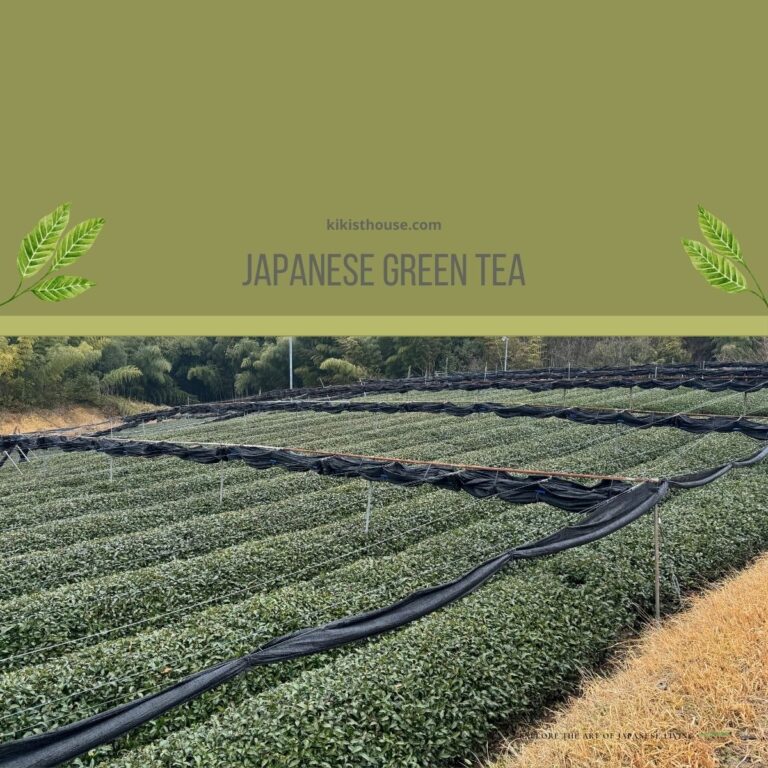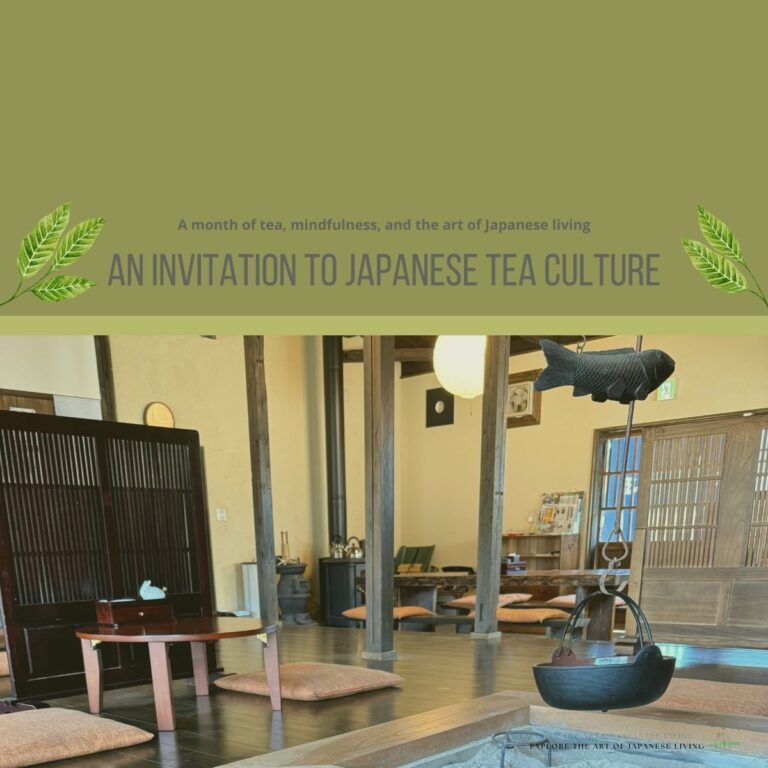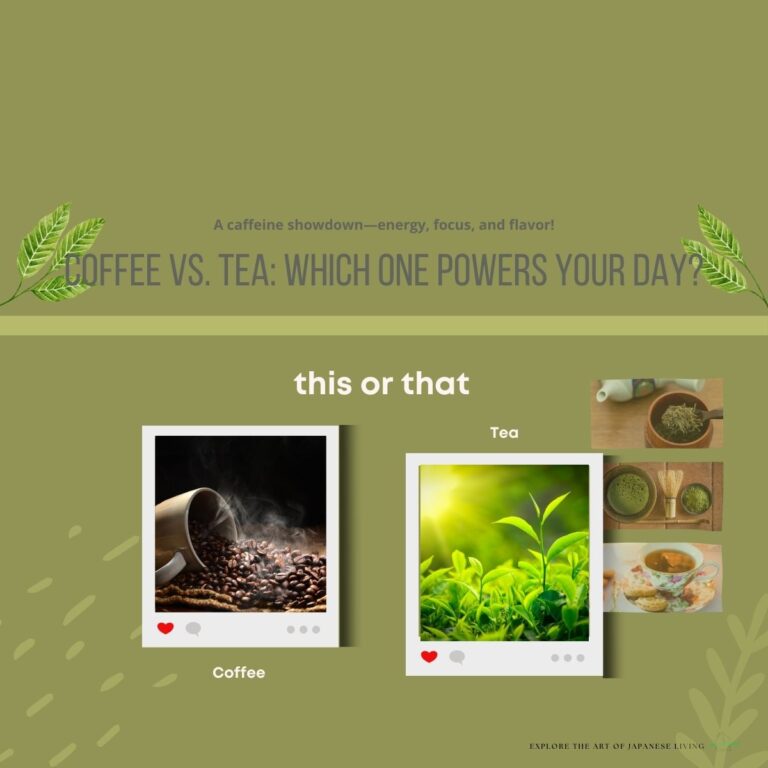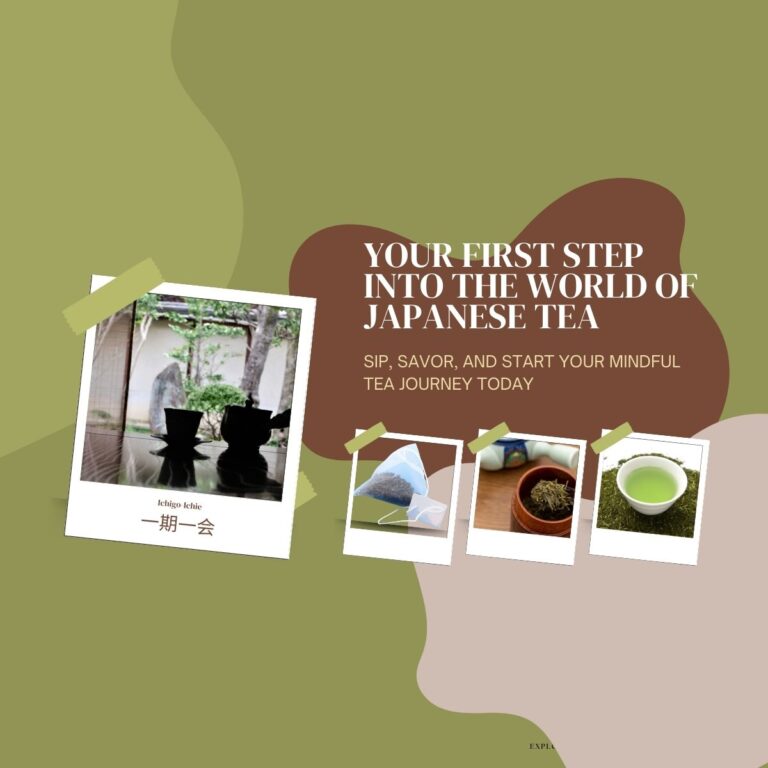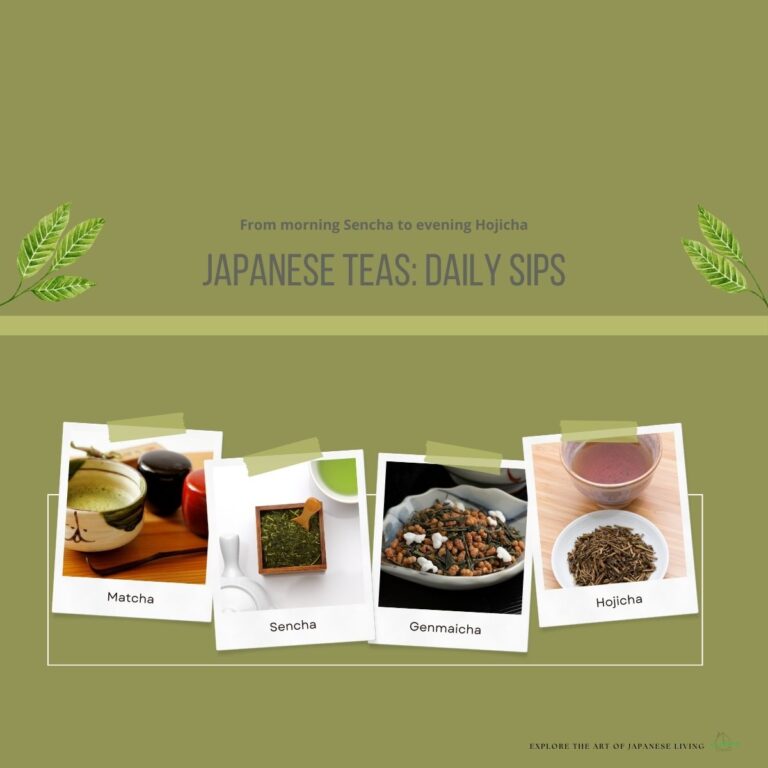Shall We Have Tea? Exploring Japan’s Drink Culture | お茶する?日本の飲み物文化
What makes Japan the ultimate beverage destination? Is it the centuries-old tea traditions, the endless drink varieties, or the café culture where every sip fosters connection? From the origins of tea in Japan to the simple phrase お茶する?(“Shall we have tea?”), Japan’s drink culture is a fascinating blend of history, artistry, and community.
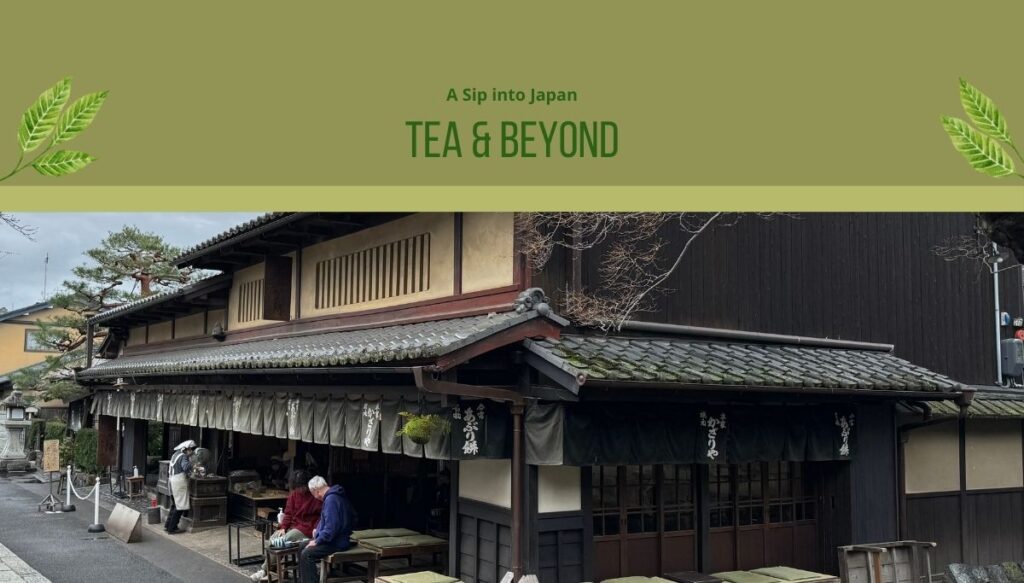
Beyond Tea: A Sip into Tradition and Innovation
Tea and coffee are enjoyed worldwide, but in Japan, they are more than just beverages—they’re experiences steeped in tradition, mindfulness, and innovation. From the tranquility of a traditional tea ceremony to the vending machines stocked with unique flavors, every sip tells a story. But what makes Japan’s drink culture so unique?
Let’s take a journey to uncover the answer.
Dolce Asks: Why Does Japan Have So Many Unique Drinks?
“Why does Japan have so many unique drinks?” Dolce wonders.
To answer this, we need to look beyond the beverages themselves and into the heart of Japanese culture—a culture that values mindfulness, creativity, and connection. Every drink, whether tea, coffee or a seasonal specialty, carries with it a story shaped by centuries of tradition and innovation.
More Than a Drink: The Heart of Japanese Beverages
For the Japanese, beverages are more than just refreshments—they are a way to connect, reflect, and celebrate. The phrase お茶する?(Shall we have tea?) captures this sentiment. It’s an invitation to pause, share a moment, and appreciate the simple pleasures of life.
A Journey Through Time: How Japan Became a Beverage Haven
Japan’s beverage culture has evolved over centuries, influenced by trade, tradition, and innovation.
- Tea’s Arrival (Heian Period, 794–1185): Brought from China, tea was initially a drink for monks to aid meditation. Over time, it became a staple of aristocratic life and, eventually, an essential part of Japanese culture.
- Coffee’s Introduction (17th Century): Dutch traders brought coffee to Japan, offering a new flavor and energy to the Japanese table. It later found a home in Japan’s nostalgic coffeehouses or kissaten.
- Modern Innovation: Today, Japan leads the world in beverage creativity, from vending machines stocked with seasonal flavors to handcrafted specialty teas and coffees.
The Soul of Japanese Tea: Mindfulness in Every Sip
Tea’s introduction to Japan wasn’t just about taste—it was about purpose. Monks used tea to stay alert during meditation, and over time, this practice evolved into an art form deeply connected to Zen Buddhism.
- The tea ceremony (Chanoyu: 茶の湯) became a practice of mindfulness and harmony, where every gesture, from whisking matcha to sharing the tea bowl, held symbolic meaning.
- More than just a drink, tea became a way to cultivate inner peace and build meaningful connections.
The Traditional Tea Ceremony: A Practice of Precision and Harmony
The Japanese tea ceremony is a thoughtfully performed tradition that focuses on mindfulness, aesthetics, and hospitality. While the overall philosophy remains the same, specific practices can vary depending on the school and region:
- Urasenke vs. Omotesenke: These are two of the most prominent tea schools in Japan. Urasenke is known for its casual approach, creating a frothy, well-whisked matcha, while Omotesenke prefers a smoother, less bubbly tea.
- Kaiseki Meal ( 懐石料理): Some formal tea ceremonies include a multi-course meal (kaiseki) before the tea is served, highlighting seasonal ingredients.
- Regional Influences: In Kyoto, tea ceremonies often emphasize wabi-sabi aesthetics, appreciating simplicity and imperfection. On the other hand, in Kanazawa, tea ceremonies might feature a more luxurious setting with gold leaf on teacups, reflecting the region’s gold craftsmanship history.
Regardless of the variations, every tea ceremony encourages mindfulness and appreciation of the present moment.
Chado & Sencha-do: Two Paths, One Spirit
To truly appreciate Japanese tea culture, one must explore its two distinct paths:
☕ Chado (The Way of Tea) – 茶道
Chado is deeply influenced by Zen Buddhism and the idea of wabi-sabi, which finds beauty in imperfection. Masters like Sen no Rikyū (千利休) transformed tea into an art, focusing on values like humility, simplicity, and harmony with nature. The tea ceremony became a sacred practice for both hosts and guests, where every movement held deep meaning.
🌿 Sencha-do (The Way of Sencha) – 煎茶道
Sencha-do is a more relaxed version of Chado, centered around loose-leaf teas like sencha (煎茶) and gyokuro (玉露). It was especially popular with poets and intellectuals, emphasizing simplicity focusing on the enjoyment of tea in everyday life rather than following strict rules and formalities.
Both practices reflect essential elements of Japanese culture: balance, connection, and finding serenity in the present moment.
Kissaten: Japan’s Nostalgic Coffeehouses
When coffee arrived in Japan, it carried an air of novelty. By the early 20th century, it had established a cultural niche through the creation of kissaten (喫茶店)—traditional Japanese coffee houses.
- These cozy spaces became havens for intellectuals, writers, and everyday people looking for quiet contemplation.
- Kissaten is still cherished today for its slow-dripped brews, warm interiors, and timeless ambiance.
A Personal Story: My Hidden Retreat in Tokyo
When I worked in the heart of Tokyo, I discovered a tiny kissaten tucked beneath a subway station. Run by its owner for decades, the space exuded timeless charm. A grand piano stood in one corner, steam rose from an iron pot, and the hum of quiet conversations blended into the background. The menu was simple: hand-dripped coffee and apple pie sourced from Gargantua, the Imperial Hotel bakery. That was it.
This kissaten became my hidden retreat during late lunch breaks. Sometimes, I’d chat with the owner; other times, I’d simply sit quietly, letting the tranquil atmosphere recharge me. Though the kissaten is gone now, its memory lingers—a reminder of how something as simple as a drink and a kind word can create lasting connections.
How Modern Trends Influence Traditional Drinking Customs
While Japan deeply respects tradition, its beverage culture continuously adapts to modern lifestyles. Some ways modern trends influence traditional drinking customs include:
- Convenience & Accessibility: Bottled versions of traditional teas like hojicha and genmaicha make them more accessible to busy city dwellers.
- Fusion with Western Flavors: Matcha lattes and hojicha cappuccinos have become café staples, blending tradition with modern taste preferences.
- Tea Tourism & Experience-Based Drinking: More travelers seek authentic tea experiences, leading to an increase in hands-on tea workshops in Kyoto, Uji, and Shizuoka.
Despite modernization, the heart of Japanese beverage culture—mindfulness and appreciation—remains intact.
The Role of Seasonal Ingredients in Japan’s Beverage Culture
Seasonality is at the heart of Japanese cuisine, and beverages are no exception. Throughout the year, Japan offers drinks that highlight seasonal ingredients, ensuring that every sip reflects the changing landscape.
🌸 Spring: Sakura-infused teas and lattes capture the fleeting beauty of cherry blossoms.
🌞 Summer: Iced matcha, yuzu-flavored sodas, and refreshing mugi-cha (barley tea) help cool down in the humid months.
🍂 Autumn: Roasted teas like hojicha and chestnut-flavored drinks complement the cozy, crisp air.
❄️ Winter: Amazake (a sweet fermented rice drink) and hot yuzu honey drinks offer warmth and nourishment.
These seasonal beverages not only celebrate nature but also encourage people to embrace the present moment, aligning perfectly with the Japanese philosophy of ichi-go ichi-e (一期一会)—treasuring each moment as unique and unrepeatable.
Dolce & Baku’s Closing Notes: The Essence of Every Sip
🍵 Dolce’s Curiosity:
“Where did Japan’s rich beverage culture begin? Let’s trace the history of tea and coffee, uncovering the traditions that shaped each sip.”
🌿 Baku’s Reflection:
“A warm cup of tea is more than just a drink—it’s a quiet invitation to slow down, reflect, and appreciate life’s simplest moments.”
With Dolce’s sense of wonder and Baku’s quiet reflection, we see how Japan’s beverage culture blends tradition and modernity, offering joy and tranquility in every sip.
Dolce & Baku’s Weekly Practice: Your Weekly Challenge
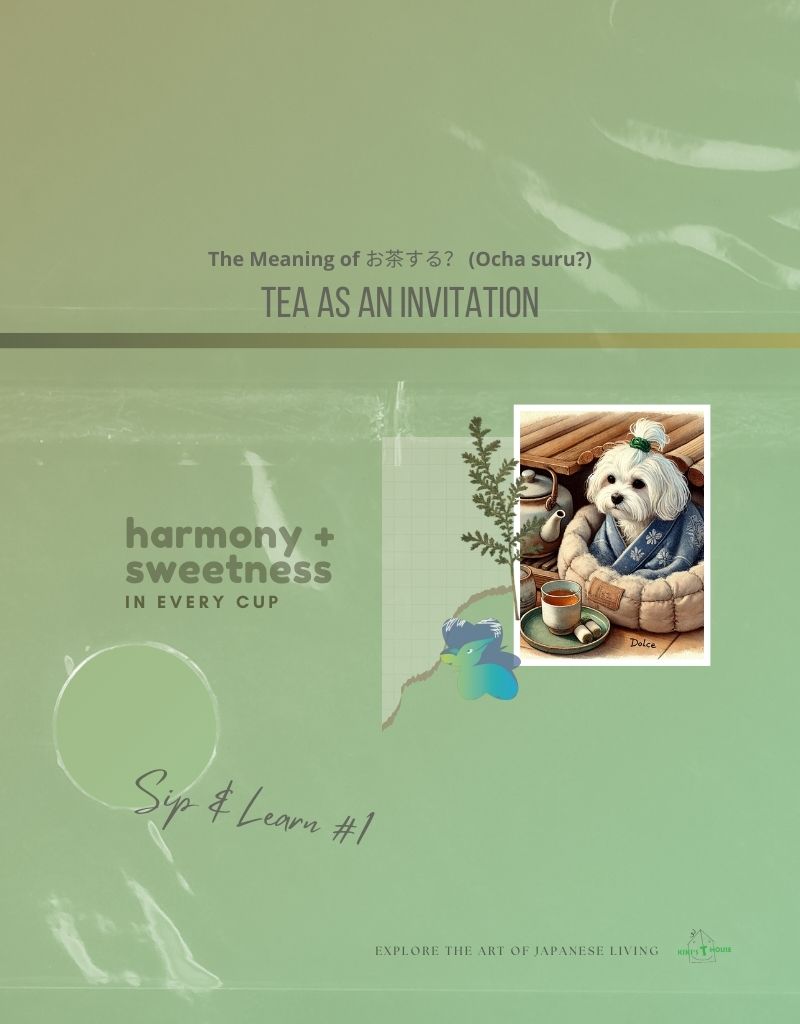
🍵 Dolce’s Challenge: Look up the phrase お茶する?(Ocha suru?) and how it’s used in daily life. What other casual phrases do Japanese people use when inviting someone for a drink?
🫖 Baku’s Reflection: The next time you have tea (or any drink), take a moment to truly savor it. Notice its temperature, aroma, and taste—how does it make you feel?
✅ Try This:
⬜ Learn the meaning of お茶する?(Ocha suru?) and its usage.
⬜ Find another Japanese phrase for inviting someone to drink.
⬜ Mindfully enjoy a cup of tea, focusing on the experience.
February Blog Series Overview: A Taste of Japanese Tea
As we dive into the world of Japanese tea this February, here’s a quick preview of what’s coming up in the next few weeks:
Week 2 (2/12): Morning to Night – The best Japanese Teas for Different Times of the Day
Discover how different Japanese teas can be enjoyed throughout the day—from refreshing morning sencha to calming evening hojicha.
Week 3 (2/19): Coffee vs. Tea – A Caffeine Comparison
A common question we all face—coffee or tea? We’ll compare the two, helping you make an informed choice and gently guiding you toward the health benefits of Japanese tea.
Week 4 (2/25): Preparing for Your Tea Journey – A Practical Guide to Starting Your Tea Adventure!
Get ready for an exciting new adventure as we prepare for our upcoming tea class. It’s your chance to take your tea knowledge to the next level!
Coming Next Week: Morning to Night with Japanese Teas
Next week, we’ll dive deeper into the world of Japanese teas, exploring how different types can be enjoyed from morning to night. From sencha in the morning to hojicha at night, get ready to uncover the unique qualities of each tea.
Join the Conversation: Share Your Sip Stories
What’s your favorite Japanese drink? Have you ever experienced a tea ceremony or tried a regional specialty tea? Share your thoughts in the comments below!
Stay Connected with Dolce and Baku
Follow Dolce and Baku as they explore the beauty of everyday moments:
📷 Instagram: [@dolce_flys]
📘 Facebook: [@kikisthouse]
📧 Say Hello!: [hello@kikisthouse]
Subscribe to the Newsletter
Thank you for being part of this journey. Until next time, may your days be filled with calm hearts and warm cup.
Sipping Stories, Steeping Memories, and Sweet Dreams Together
Kiki and Dolce


